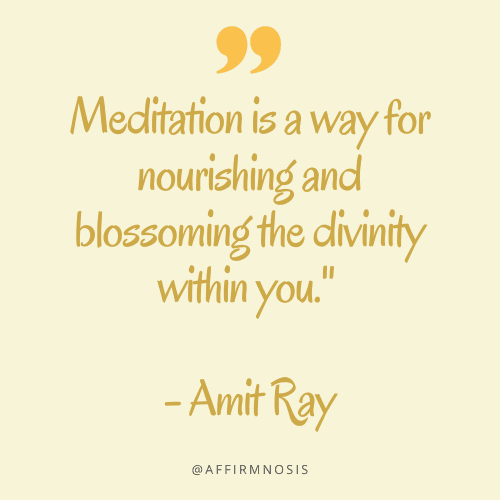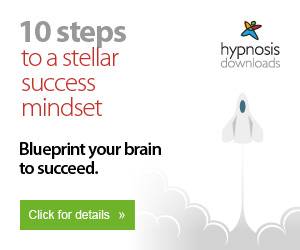Definition of Vipassana Meditation
Vipassana Meditation is a mindfulness meditation technique that is aimed at achieving self-transformation through self-observation. It is a traditional practice from India that has been practiced for thousands of years, and it is still widely used today.
This meditation technique involves the cultivation of mindfulness through the observation of sensations in the body to gain insight into the nature of reality and the self.
The word ‘vipassana’ means ‘to see things as they really are.’ The practice begins with observing one’s breath and body sensations to develop concentration, mindfulness, and awareness.
Practitioners are encouraged to observe their thoughts, emotions, and bodily sensations without judgment or attachment. This process leads to greater self-awareness and understanding of how one’s mind works.
Brief history and origins of Vipassana Meditation
The origins of Vipassana Meditation can be traced back to ancient India, where it was first taught by Gautama Buddha over 2500 years ago as part of his teachings on ending suffering. Buddha himself learned vipassana meditation from his guru Uddaka Ramaputta before developing his own version.
Over time, Vipassana Meditation became a popular practice among Buddhists in India, Burma (now Myanmar), Sri Lanka, Thailand, Cambodia, Laos, Vietnam, Malaysia.
In the Western world it began gaining popularity in the 20th century after being introduced by S.N Goenka who brought this ancient technique back from Burma.
Today there are various schools or lineages that teach vipassana meditation such as Theravada and Mahayana Buddhism which have given rise to numerous centers around the world dedicated exclusively to teaching this form of meditation.
Vipassana Meditation has evolved over time but remains an important aspect of Buddhist practices around the world.
The Basics of Vipassana Meditation
The Goal of Vipassana Meditation: Attaining Insight into the Nature of Reality
Vipassana meditation is a type of mindfulness meditation that aims to cultivate insight into the nature of reality. The ultimate goal of Vipassana meditation is to obtain a deep understanding of the true nature of existence and gain liberation from suffering.
According to Buddhist philosophy, ignorance leads to craving, which in turn leads to suffering. By cultivating wisdom through insight into the true nature of existence, one can overcome ignorance and achieve liberation from suffering.
The Importance of Mindfulness in Vipassana Meditation: Staying Present in the Moment
Mindfulness is a crucial component in practicing Vipassana meditation. Mindfulness involves staying present in the moment and being aware of one’s thoughts, feelings, bodily sensations, and surroundings without judgment or attachment.
In Vipassana meditation, mindfulness helps us observe our inner experiences with clarity and objectivity. By staying present with our experience without judgment or attachment, we can develop a deeper understanding of ourselves and our relationship to the world around us.
Techniques Used in Practicing Vipassana Meditation: Focusing on Sensations and Breath
There are different techniques used in practicing Vipassana meditation. One common technique is focusing on bodily sensations such as tingling or pressure as one sits quietly with eyes closed. The practitioner observes these sensations with equanimity without reacting emotionally or physically.
Another technique is focusing on breath as it enters and leaves through nostrils while sitting quietly with eyes closed. This helps practitioners develop their concentration skills by focusing on one point while calming their minds.
A third technique involves actively scanning each part of the body systematically for physical sensations while sitting quietly with eyes closed. This enables practitioners to observe both pleasurable and painful sensations without reacting to them and develop equanimity.
The basics of Vipassana meditation involve cultivating mindfulness, focusing on bodily sensations and breath, and developing insight into the true nature of existence.
By staying present in the moment with non-judgmental awareness, we can gain a deeper understanding of our thoughts, feelings, and bodily sensations.
Over time, this practice can lead to increased wisdom and liberation from suffering.
Benefits of Practicing Vipassana Meditation
Vipassana meditation is known for its transformational effects, and its benefits go beyond just the practice itself. Practicing regularly can bring about various physical, mental, and spiritual benefits. Here are some of the benefits you can expect when you incorporate Vipassana meditation into your daily routine:
Physical Benefits such as Stress Reduction and Improved Sleep Quality
When we experience stress, our sympathetic nervous system activates our “fight or flight” response. This response increases heart rate, breathing rate, and blood pressure.
While this response is crucial in responding to threats or danger, it can become chronic when stressors are present in our daily lives. The good news is that practicing Vipassana meditation has been shown to reduce the activity of the sympathetic nervous system.
When we practice Vipassana meditation, we focus on our breath and body sensations. This helps us become more aware of our thoughts and emotions without getting caught up in them.
By doing so, we can learn to respond more calmly and effectively to stressful situations. Additionally, Vipassana meditation has been shown to improve sleep quality by reducing anxiety levels before bedtime.
Mental Benefits such as Increased Focus, Clarity, and Emotional Regulation
One of the primary goals of Vipassana meditation is to develop mindfulness – a state of non-judgmental awareness in which we pay attention to our present moment experiences without reacting to them reflexively.
As mindfulness improves through regular practice of Vipassana meditation; we become more focused on the task at hand.
Moreover; In addition to increased focus; clarity is another mental benefit that comes with regular practice of this technique. We gain a clearer understanding not only about ourselves but also about other people’s thoughts and feelings as well!
It allows us to see things from multiple perspectives, which is an essential skill in decision-making and problem-solving. One of the most significant mental benefits of Vipassana meditation is emotional regulation.
By practicing mindfulness, we learn to recognize and observe our emotions without getting caught up in them. This allows us to respond more effectively to our emotions, rather than being controlled by them.
Spiritual Benefits such as a Deeper Understanding of the Self and the World Around Us
While Vipassana meditation has been scientifically studied for its physical and mental benefits, it is also rooted in spirituality. The ultimate goal of this technique is achieving enlightenment – a state of complete liberation from all suffering.
Practicing Vipassana meditation allows us to develop a deeper understanding of ourselves and our connection to the world around us.
It helps us see beyond our ego-centered perspective and realize that we are all interconnected beings who share a common human experience.
Moreover; While spiritual experiences may differ from person to person depending on their beliefs, Vipassana meditation can be practiced by anyone regardless of their religion or spiritual background.
It can help individuals connect with their inner selves and discover their true purpose in life. ; Incorporating Vipassana meditation into your daily routine can have significant physical, mental, and spiritual benefits.
With regular practice, you can reduce stress levels, improve sleep quality and increase focus & clarity. Additionally; Practicing mindfulness brings emotional regulation which helps you respond more efficiently to your emotions while developing a deeper understanding of yourself & world around you!
Advanced Techniques in Vipassana Meditation
Body Scanning Technique: Exploring the Inner Landscape
The body scanning technique is a powerful tool to develop mindful awareness of the sensations throughout the body. This technique involves systematically focusing your attention on each part of your body, starting from the crown of your head down to your toes, and observing any sensations that arise without judgment.
By doing so, you can gain insight into how every part of your body feels and learn to develop a deeper level of understanding about yourself. The practice begins by sitting or lying down in a comfortable position with eyes closed.
Then, you focus on breathing deeply through your nostrils and directing your attention to each specific part of the body until you cover it in its entirety. You observe any sensations that arise during this process, whether they are pleasant or unpleasant, and avoid reacting to them.
Through regular practice with this technique, one can become more aware of bodily sensations and emotions linked with these sensations. This increased awareness allows us to better regulate our emotional state and improve overall well-being.

Walking Meditation: Mindful Movement
Another effective way to cultivate mindfulness is through walking meditation. While practicing walking meditation, you pay close attention to the experience of walking itself, noting each movement as it occurs- lifting the foot up, moving it forward through space and placing it back onto the ground.
Walking meditation helps us bring our focus back to our physical presence when we feel scattered or overwhelmed mentally- as we often do when we spend extended periods sitting still during traditional meditation practices.
It also has been shown that combining walking meditation with other mindfulness practices can bring greater benefit than either practice alone. To begin practicing walking meditation simply pick a comfortable location with limited distractions like a garden or park path- even indoor spaces will work provided there are no obstacles around.
As you walk slowly along this path, feel the sensations in your feet as you lift and lower them, your legs as they move, hips and center of gravity as they shift. Try to maintain this constant awareness throughout the duration of the practice.
Loving-Kindness Meditation: Cultivating Compassion
Loving-Kindness meditation is a technique that encourages us to focus on feelings of love and kindness towards ourselves, others, and all beings. This practice involves repeating phrases or mantras that promote positive emotions such as love, compassion, gratitude or happiness. To begin practicing loving-kindness meditation sit quietly with eyes closed in a comfortable position.
Focus on your breath for a few minutes until you have gained some stillness and presence. When you feel ready, start reciting phrases internally such as: “May I be happy”, “May I be peaceful”, “May I be healthy”.
Then direct these same phrases towards someone close to you such as a family member or friend. After some time move onto people who are strangers or people who challenge you emotionally.
This type of meditation can help cultivate feelings of empathy toward oneself and others while combating negative emotions like anger or resentment- fostering a sense of connection with others across boundaries that traditionally separate us.
It can also improve our ability to focus on positive experiences in life which leads to greater happiness over time.
Common Challenges in Practicing Vipassana Meditation
Dealing with Distractions During Meditation
Meditation requires focus and concentration. However, even the most seasoned meditators can encounter distractions during the practice.
Common distractions include sounds, bodily sensations, thoughts, and emotions. One technique to deal with distractions is to acknowledge them without getting caught up in them.
Acknowledging these distractions allow you to gently return to your meditation object without judgement or frustration. Another approach to dealing with distractions is noting or labeling them.
Noting is a technique where you mentally label a thought or emotion as “thinking” or “feeling”. This helps put some distance between yourself and your thoughts and emotions, making it easier to let go of them.
It’s essential to remember that having a wandering mind during meditation is common and natural. Redirecting attention back to the present moment should be done gently and persistently.
Overcoming Resistance to Sitting for Long Periods of Time
One of the biggest challenges in practicing Vipassana Meditation is sitting for long periods of time. It can be challenging both physically and mentally.
A good way to overcome this resistance is by easing into longer sessions gradually instead of jumping straight into an hour-long session. Also, adopting proper posture can help alleviate physical discomfort from prolonged sitting.
Ensure that your back is straight but not tense, feet are placed flat on the ground, hands rest comfortably on your lap or knees while keeping the eyes closed throughout the session.
Another way of addressing resistance towards long sitting meditation sessions involves incorporating walking meditation into one’s practice routine as a means for taking short breaks in between longer periods of sitting.
Coping with Physical Discomfort During Meditation
Physical discomfort such as soreness or stiffness can occur during prolonged sitting mediation practice sessions which may lead one away from their practice. However, it’s important to remember that this discomfort is natural and temporary.
One technique to cope with physical discomfort is to shift the focus of attention from the sensation towards the breath.
If possible, adjust your posture or position slightly to alleviate physical discomfort. Often, shifting or adjusting one’s position can help diffuse any anxiety that may arise from unpleasant sensations.
Having a consistent meditation practice helps in developing resilience towards physical discomfort. As we continue with our practice over time, we learn how to sit still while tolerating a certain level of discomfort without reacting or responding impulsively.
Conclusion: Dealing with Common Challenges in Vipassana Meditation
Vipassana Meditation comes with its own set of challenges. Distractions during meditation can be frustrating but acknowledging and redirecting attention back to the present moment can help overcome them.
Resistance towards sitting for long periods can be addressed by easing into longer sessions gradually and incorporating walking meditation into one’s routine.
Physical discomfort is natural but can be managed by adjusting posture or shifting focus onto our breath. Ultimately, developing resilience towards these challenges takes time and consistent effort on our part in cultivating mindfulness through Vipassana Meditation practice.
The Role of Community in Practicing Vipassana Meditation
Importance of Group Practice and Support
While Vipassana meditation can be practiced individually, there are many benefits to practicing with a group. First and foremost, group practice provides support and accountability.
It’s much easier to maintain a consistent practice when you know others are also practicing alongside you.
You may feel more motivated to attend group sessions rather than skipping your own individual practice. Additionally, practicing with others can help deepen your understanding and experience of the meditation techniques.
Sharing experiences can help clarify any confusion or challenges that arise during the practice. Group practice can also enhance feelings of connection and belonging.
As humans, we naturally crave connection and social interaction. Practicing in a group setting not only helps satisfy this need but can also foster a sense of community centered around shared values and goals.
Overview on Silent Retreats
Silent retreats are an integral part of Vipassana meditation practice. These retreats involve several days (sometimes weeks) spent meditating in silence with other practitioners under the guidance of experienced teachers.
The main goal of silent retreats is to provide an opportunity for deep introspection by creating an environment free from distractions.
Participants refrain from engaging in any form of communication or entertainment, including reading and writing, during their time at the retreat center. Silent retreats allow practitioners to focus solely on their inward journey without external distractions or interruptions from daily life.
This type of immersive experience often leads to profound insights into one’s own mind, thoughts, feelings, patterns, and behaviors.
It’s important to note that while silent retreats offer many benefits for personal growth and self-discovery, they may not be suitable for everyone – particularly those with existing mental health conditions or physical limitations.
The Role of Community in Practicing Vipassana Meditation
The role of community in practicing Vipassana meditation is significant. Group practice can provide support, accountability, and deepen understanding of the techniques.
Silent retreats offer a unique opportunity for deep introspection and self-discovery, but may not be suitable for everyone.
Whether you choose to practice alone or with others, it’s important to remember that Vipassana meditation is a personal journey. There is no right or wrong way to approach it – simply find what works best for you and commit to making it a regular part of your life.
Conclusion
The Practice of Vipassana Meditation is a Journey
Practicing Vipassana meditation requires dedication and commitment. It is not a quick fix for the challenges that we face in our daily lives, but rather a journey towards greater self-awareness, clarity, and peace.
Through regular practice, one can develop the skills necessary to live life with greater equanimity and compassion for oneself and others.
Vipassana Meditation is Accessible to Anyone
Despite its origins in Buddhist tradition, Vipassana meditation is accessible to anyone regardless of their religious or cultural background.
The techniques used in this practice are rooted in mindfulness and awareness of bodily sensations which can be practiced by anyone regardless of age or physical ability.
The Power of Group Practice
While Vipassana meditation can be practiced alone, the benefits of group practice should not be overlooked. Practicing with others can provide accountability and support while also fostering a sense of community.
Many practitioners choose to attend silent retreats which offer an opportunity to deepen their practice while also connecting with likeminded individuals.
The Journey Continues Beyond the Cushion
The benefits of practicing Vipassana meditation extend beyond the time spent on the cushion. With increased self-awareness and emotional regulation comes greater ease in navigating daily challenges with more clarity and compassion.
The journey towards greater inner peace is ongoing but it is one that is worth taking. Vipassana meditation offers a powerful tool for developing mindfulness and self-awareness which can lead to physical, mental, and spiritual benefits.
While it may take time and dedication to see these benefits manifesting consistently in one’s life, the rewards are well worth it. Whether through individual or group practice, this technique offers a pathway towards living life with greater ease, balance, and compassion.
Quotes on meditation and mindfulness that can be applied to the practice of Vipassana meditation.
- “Meditation is not evasion; it is a serene encounter with reality.” – Thích Nhất Hạnh
- “The gift of learning to meditate is the greatest gift you can give yourself in this lifetime.” – Sogyal Rinpoche
- “Meditation is the discovery that the point of life is always arrived at in the immediate moment.” – Alan Watts
- “Meditation is not about stopping thoughts, but recognizing that we are more than our thoughts and our feelings.” – Arianna Huffington
- “Meditation is not to get out of society, to escape from society, but to prepare for a reentry into society.” – Thích Nhất Hạnh
- “Meditation is the ultimate mobile device; you can use it anywhere, anytime, unobtrusively.” – Sharon Salzberg
- “Meditation is a way for nourishing and blossoming the divinity within you.” – Amit Ray
- “Meditation is the tongue of the soul and the language of our spirit.” – Jeremy Taylor
- “Meditation is the soul’s perspective glass.” – Owen Feltham
- “Meditation is the dissolution of thoughts in eternal awareness or pure consciousness without objectification, knowing without thinking, merging finitude in infinity.” – Voltaire
These quotes emphasize the transformative power of meditation, its role in self-discovery, and its potential to bring about a sense of peace and wisdom.









